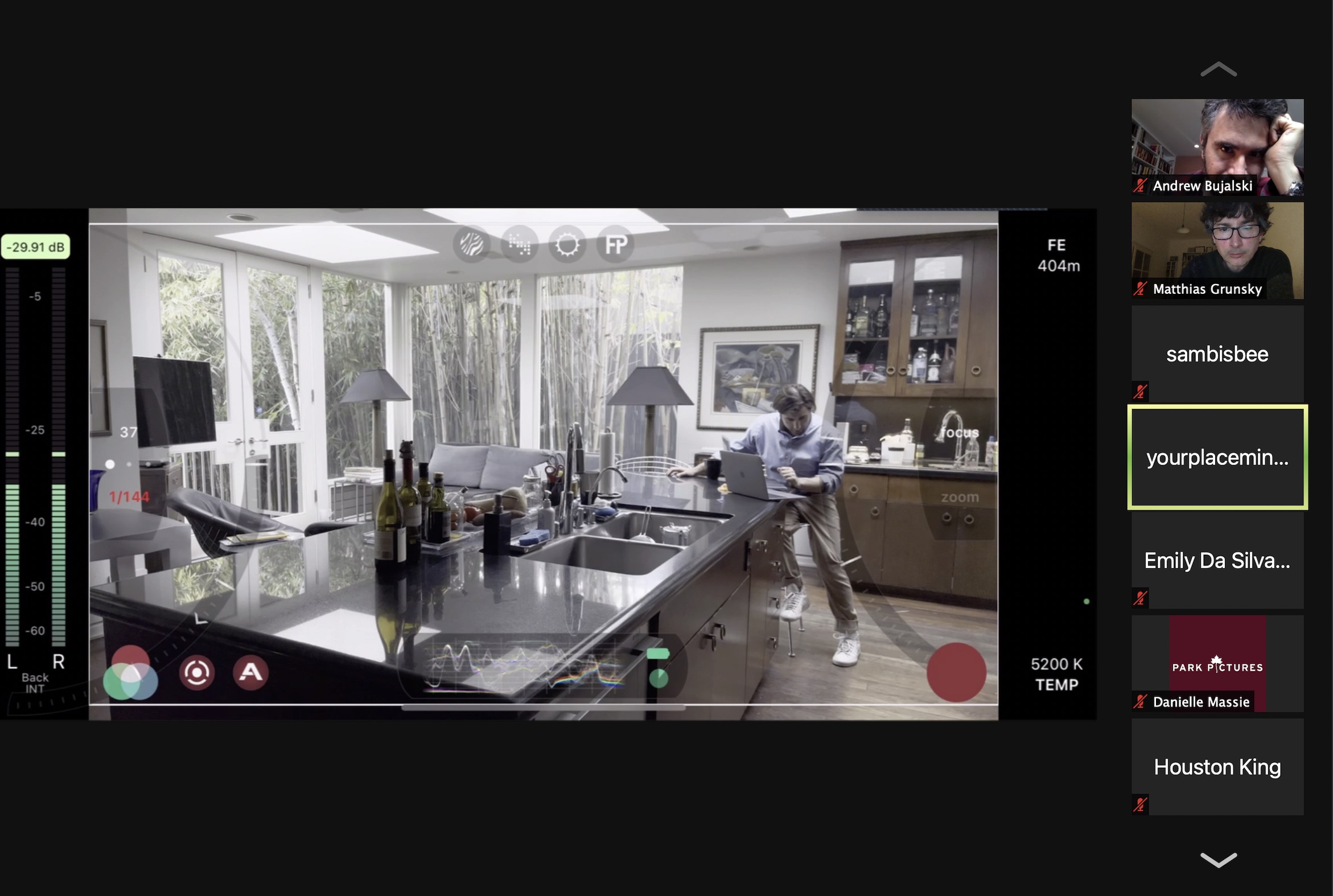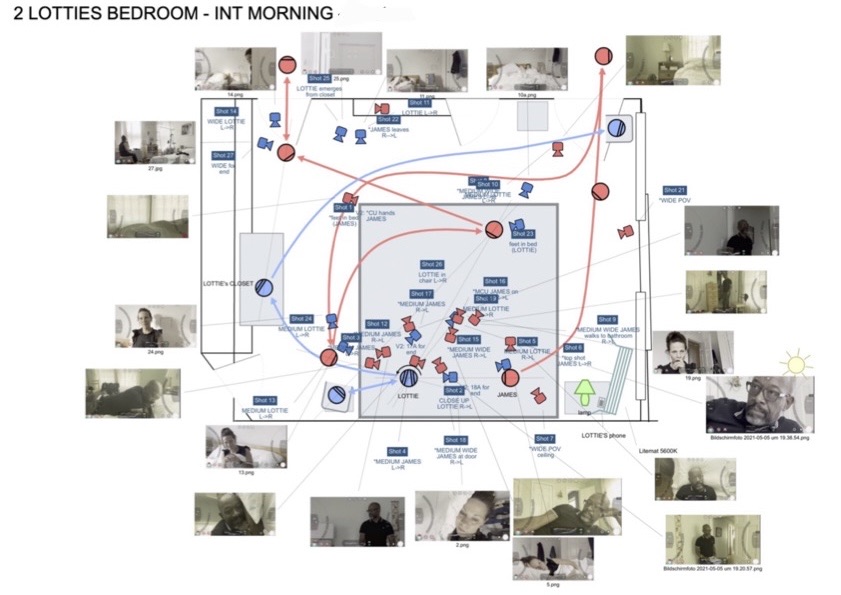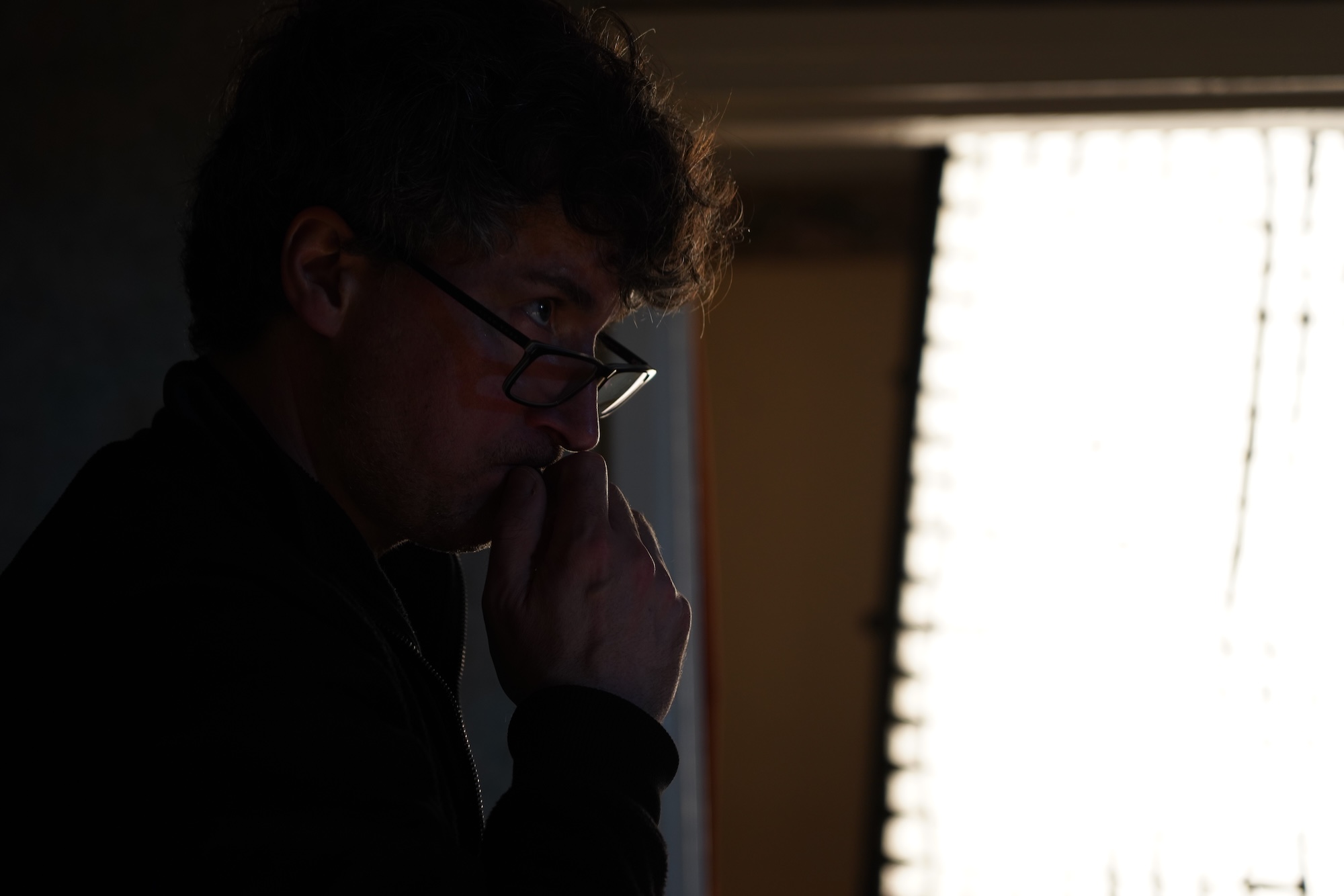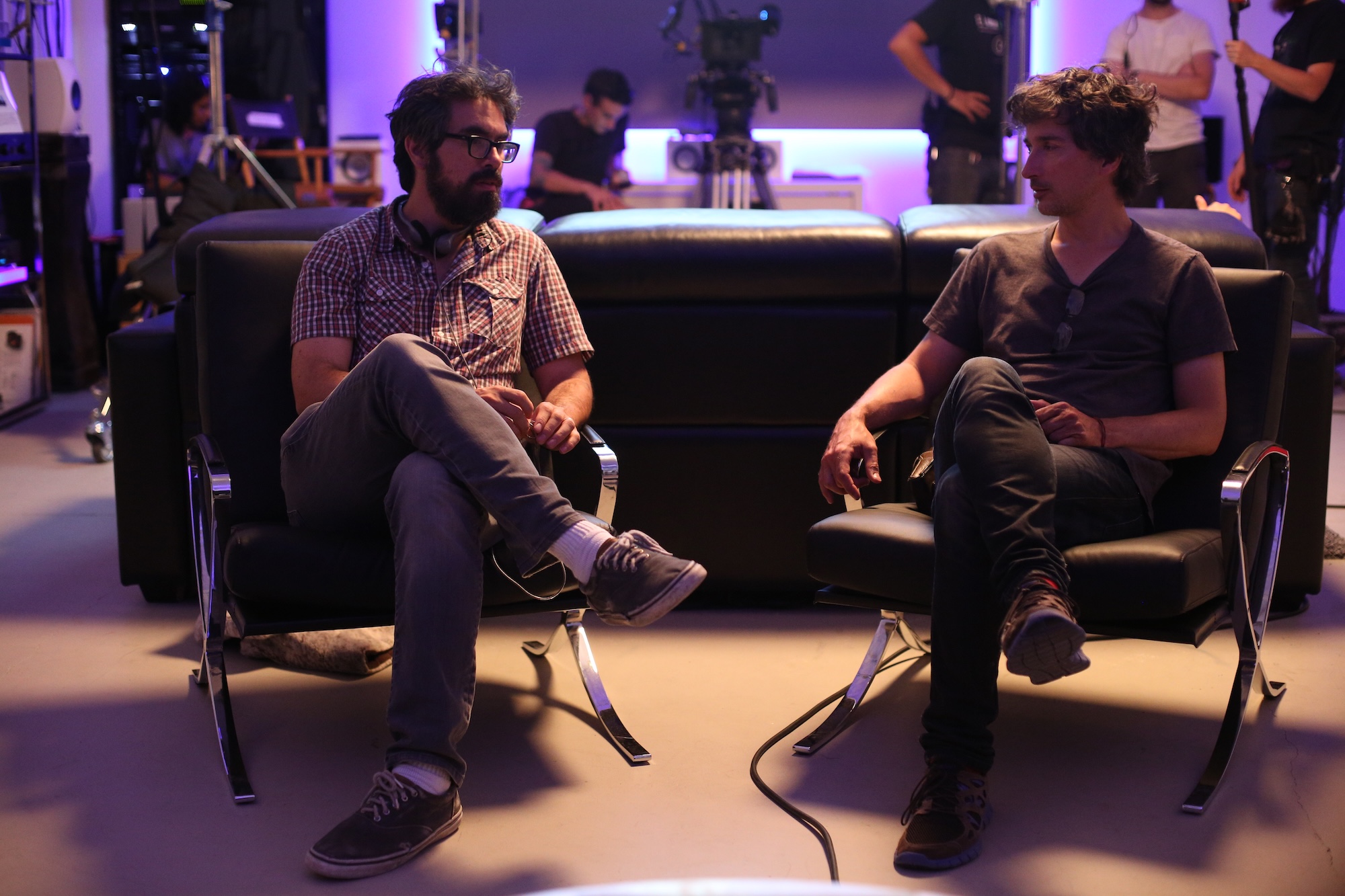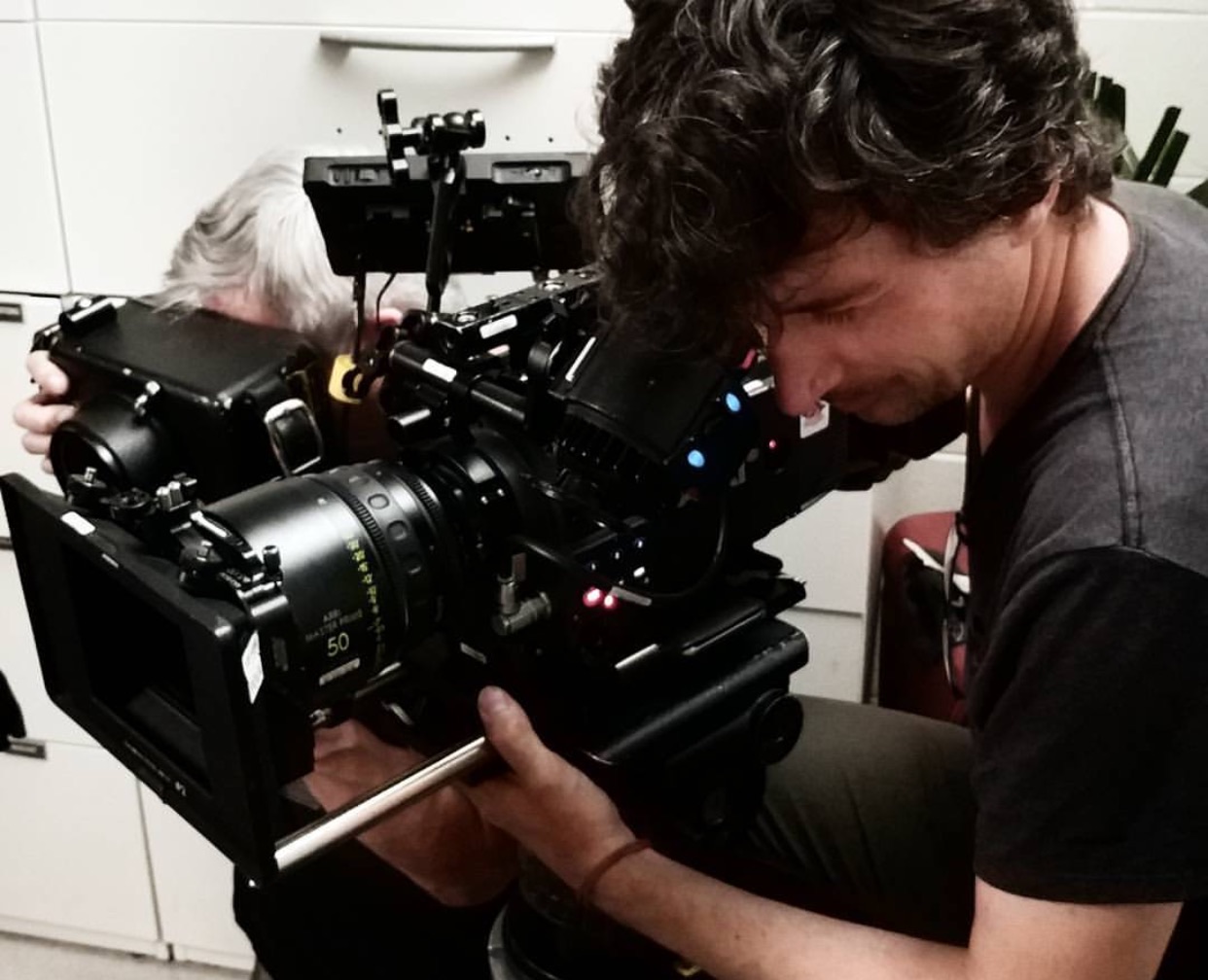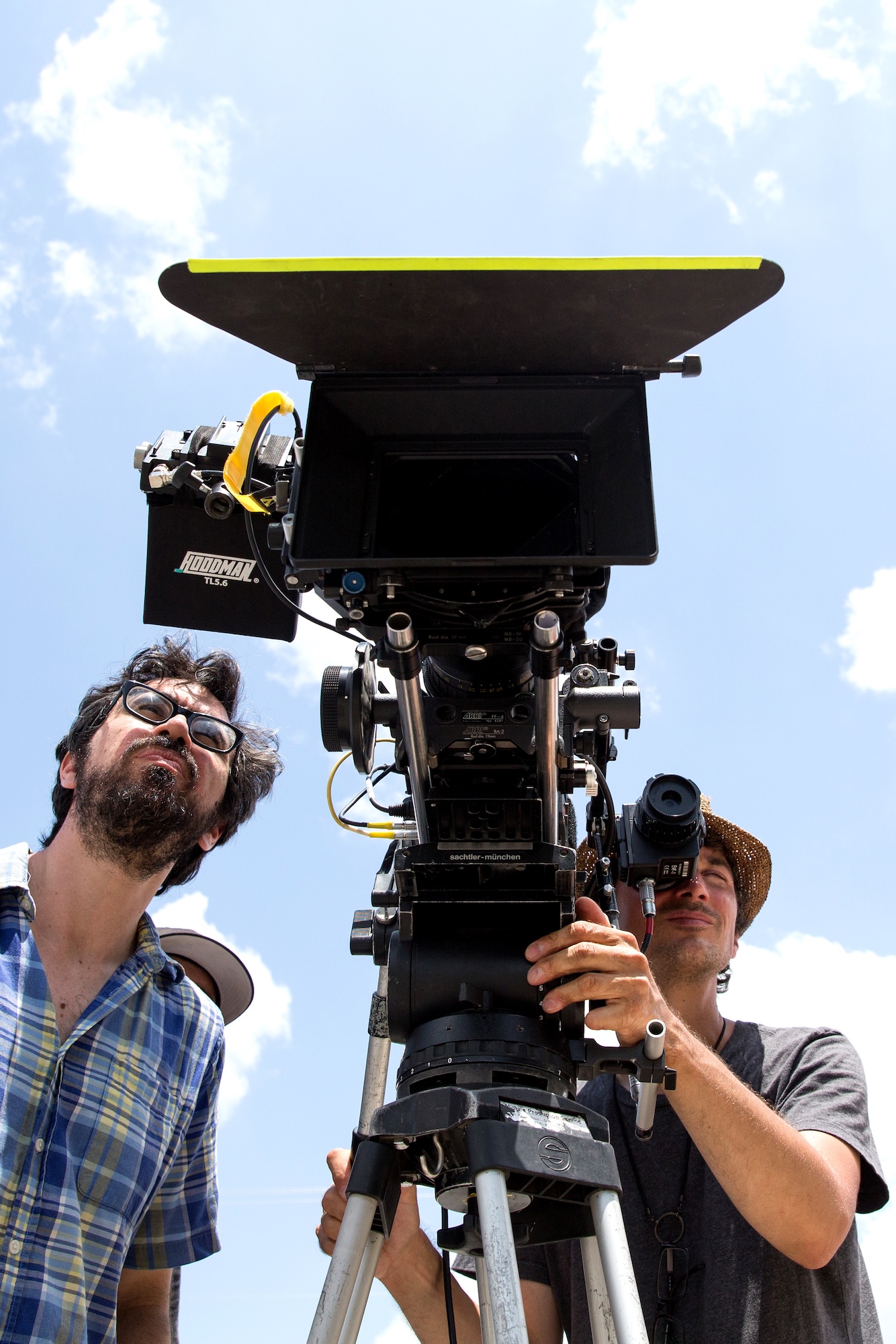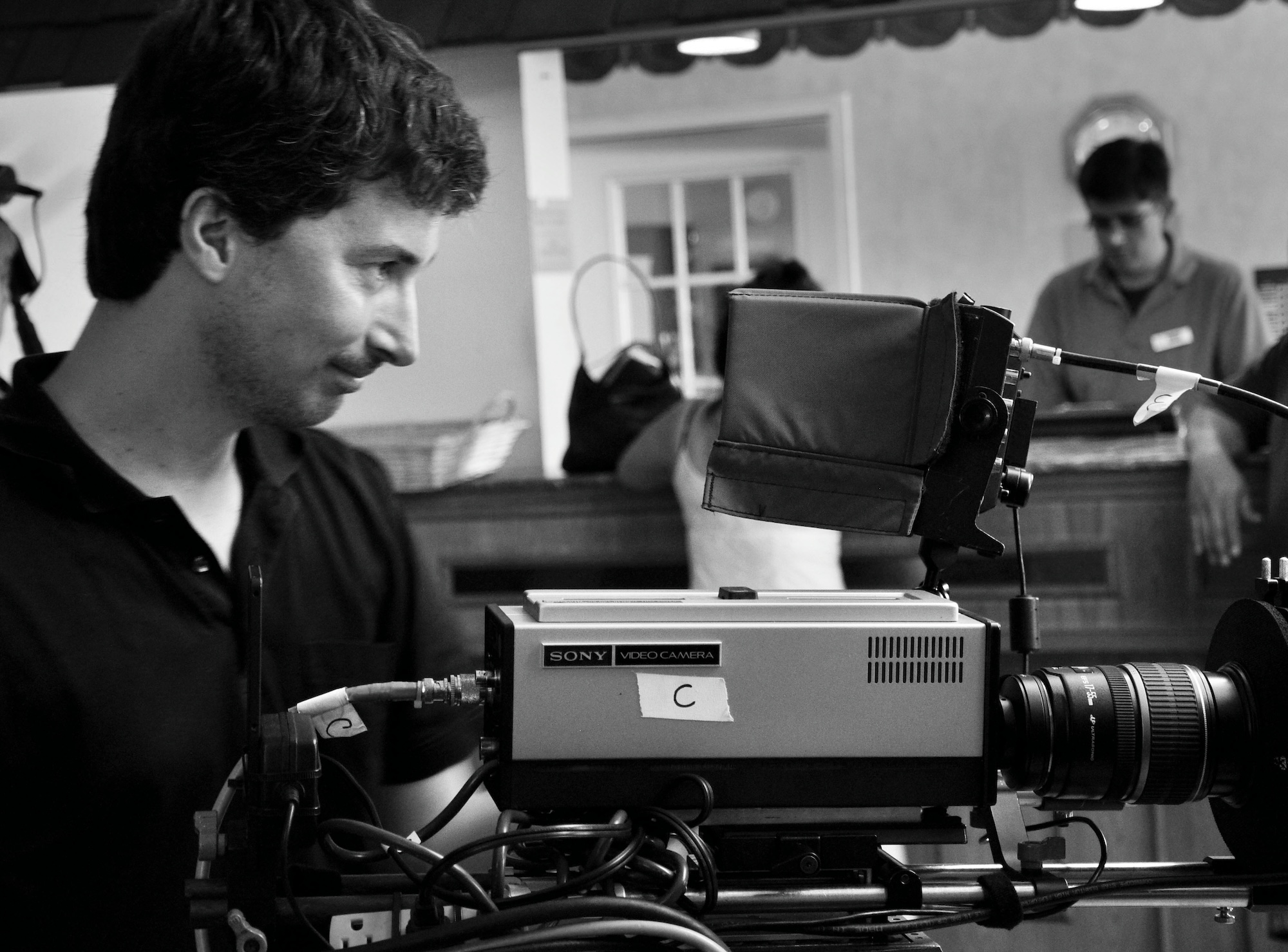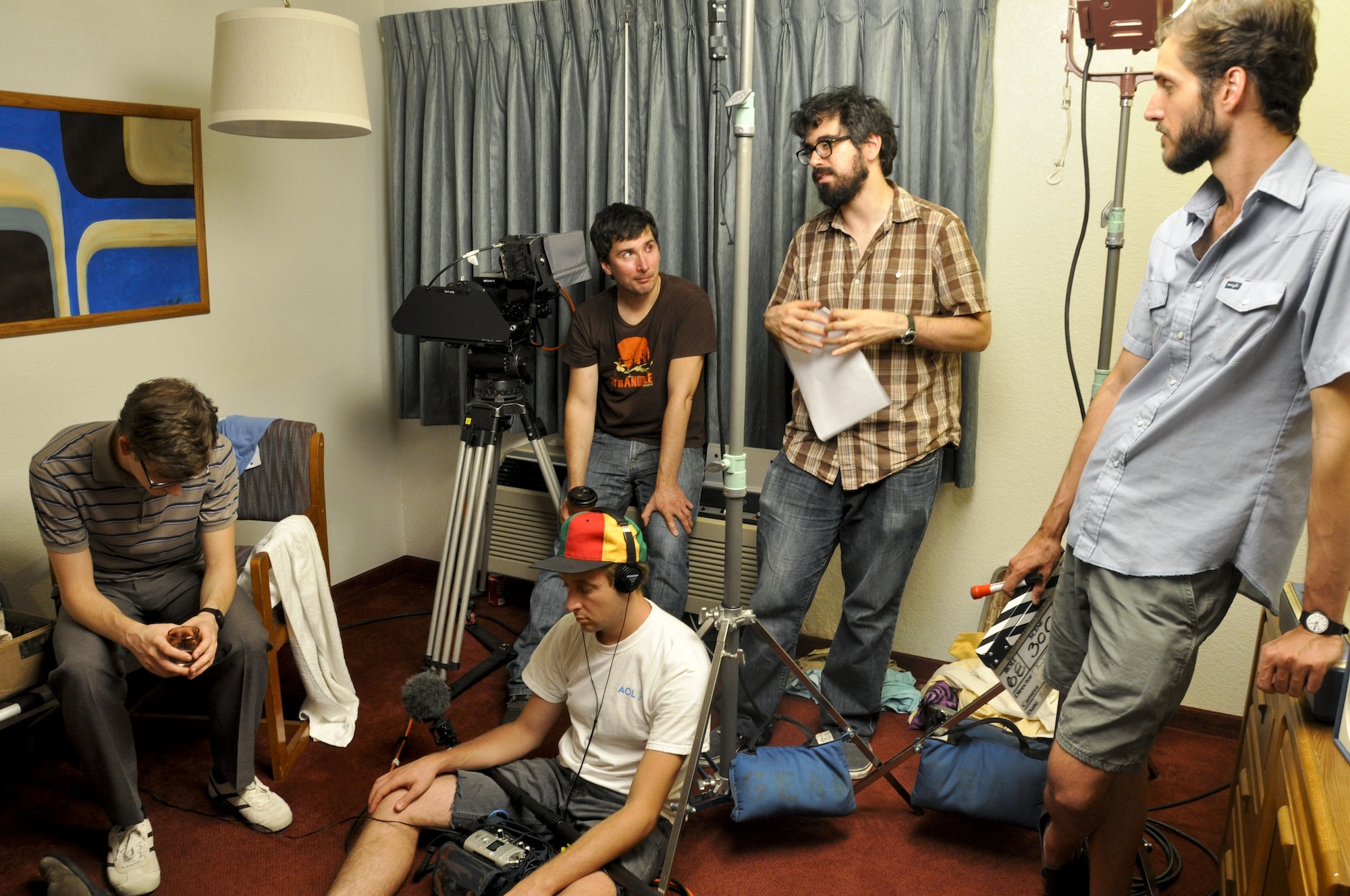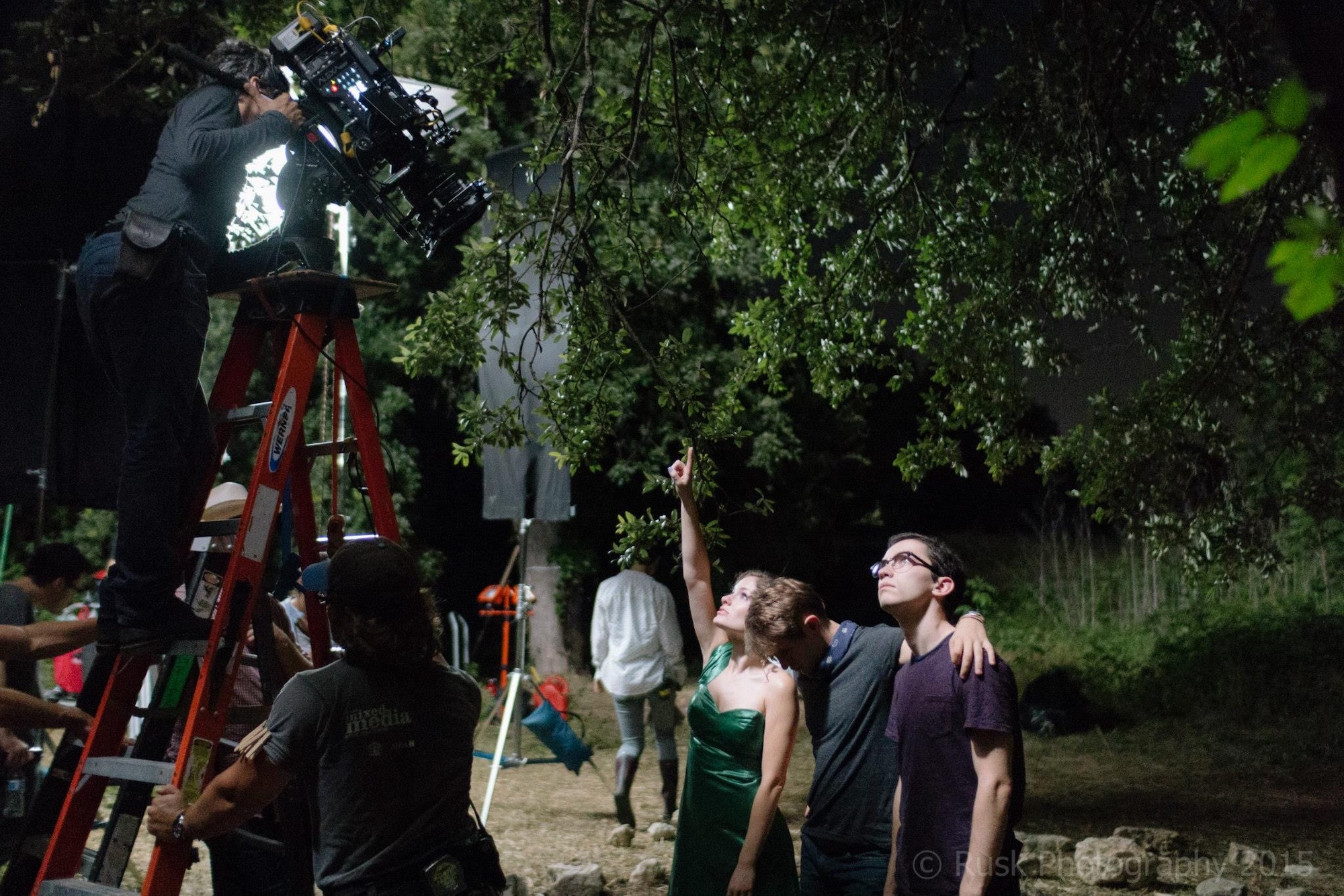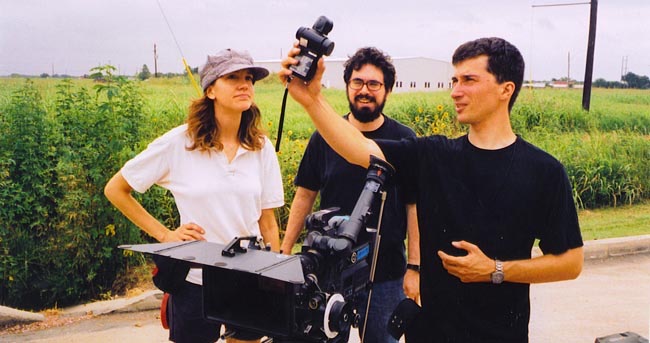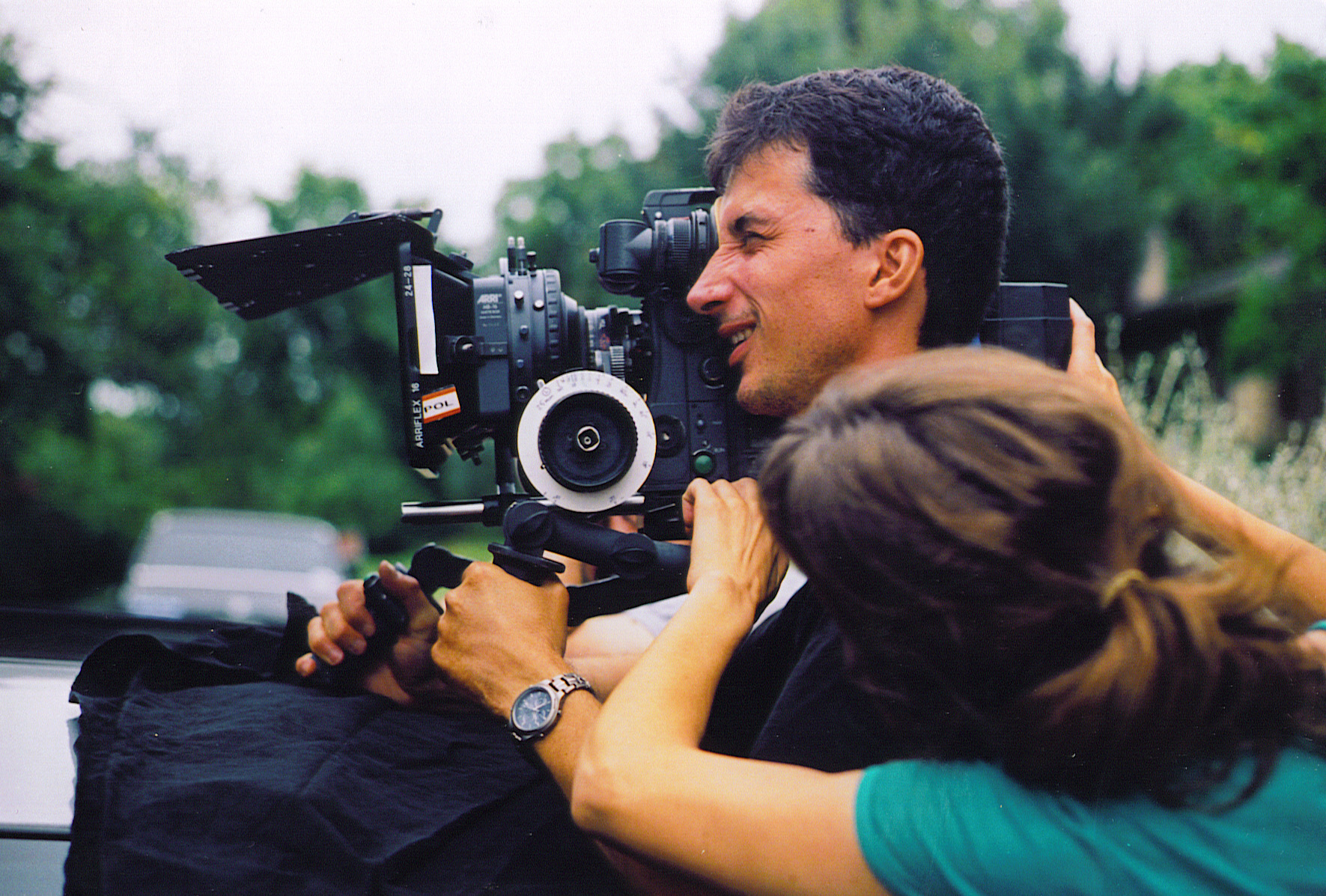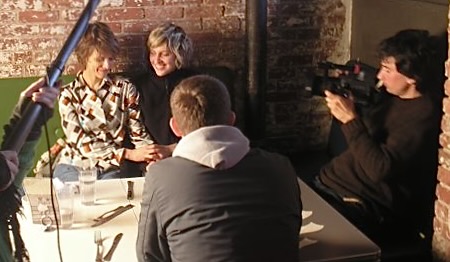MATTHIAS GRUNSKY, bvk
CINEMATOGRAPHER
PRESS COMMENTARY
LEIBNIZ - CHRONICLE OF A LOST PAINTING
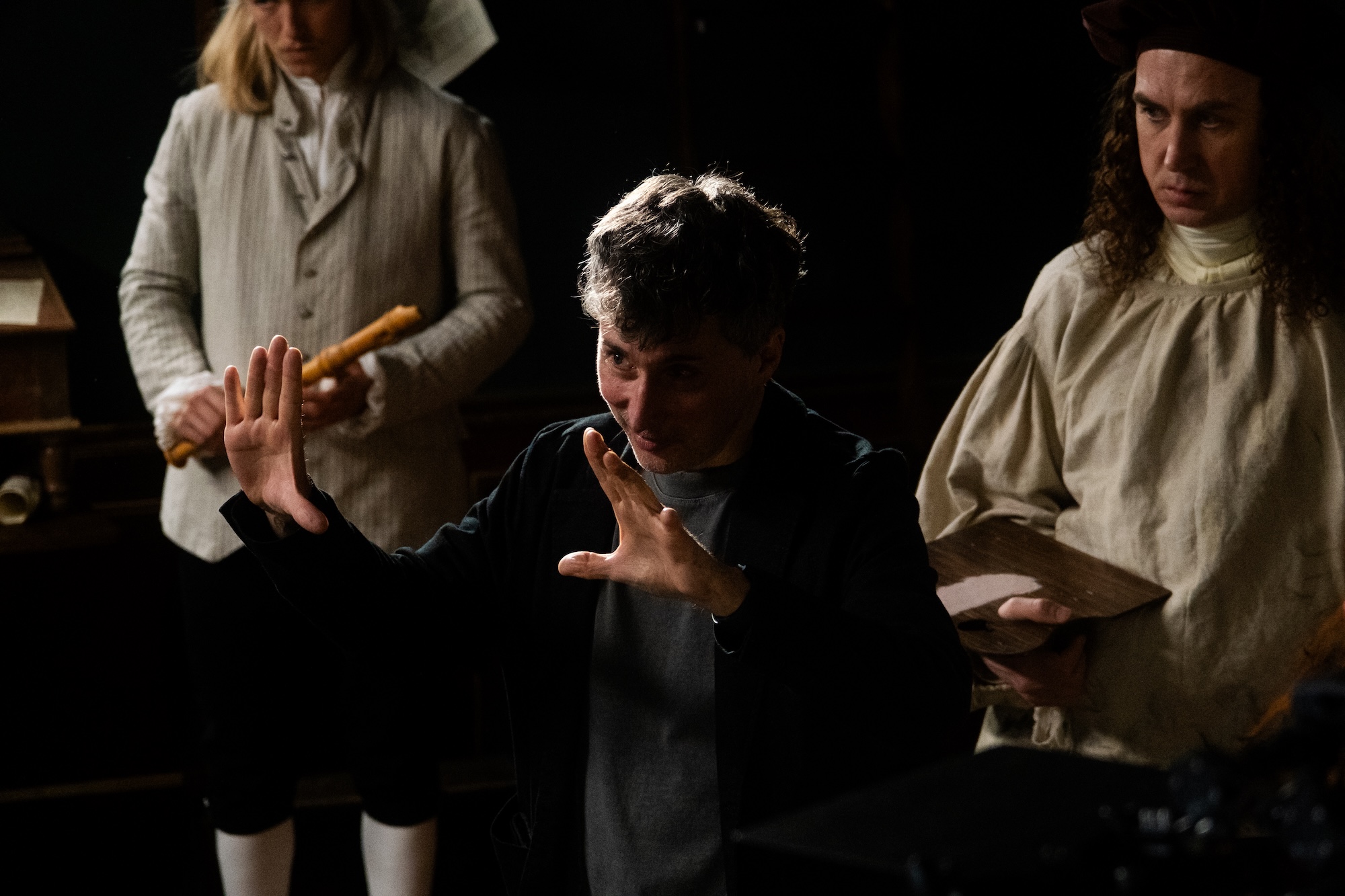
INTERNATIONAL CINEPHILE SOCIETY | Matthew Joseph Jenner
„Binding this film together, in addition to the spirited performances, is a unique and captivating visual and tonal aesthetic that contributes to the general conversation around the role of art in capturing the past. Reitz has consistently shown precise attention to detail when constructing his films, and Leibniz is certainly not an exception, being one of his most visually arresting works to date. The entire film is enshrouded in a dreamlike, hypnotic aesthetic that immediately separates it from the rigid, dull period pieces we may anticipate... A beautiful, poignant and sublime work of cinematic artistry that consolidates Reitz as one of our greatest and most essential visionaries.“
DMOVIES | Lida Bach
„Eclectic requisites, lush costumes and a chiaroscuro lighting reminiscent Rembrandt and de La Tour, transform DP Matthias Grunsky‘s images into miniature artworks.“
CINEUROPA | Roberto Oggiano
„In one magnificent sequence where light takes centre stage, we see a camera obscura on the canvas, onto which the painter, Van Der Meer, is quick to superimpose Leibniz’s seraphic face. It's an astonishing, symbolic image, bringing art and philosophy together.“
FILMUFORIA | Meredith Taylor
„Exquisitely captured in candlelight the drama glows delicately in Matthias Grunsky’s camerawork and Renate Schmaderer’s atmospheric set designs.“
C7NEMA | Jorge Pereira
„In one of the most striking scenes, for example, Van Der Meer creates a camera obscura that fills Leibniz's face, a moment of pure magic that, together with the gentle movements of Reitz's camera, as well as frequent non-invasive close-ups that convey deep sensations articulated with the propositions of the discussions, produce a work of abundant beauty.“
QUARTA PARETE | Elena Salvati
„In the midst of the Enlightenment, Edgar Reitz manages to include all the canons of the rationalist and pessimistic thinking of the century, bringing them together in an articulate and intense dialogue, setting it in a complex metalinguistic and scenographic environment composed of infinite chiaroscuro, as if the film itself were nothing more than a canvas by the aforementioned Rembrandt and Vermeer...The film is yet another tribute to art that deserves, like a wonderful painting on display, to be admired and contemplated in the complete silence of a cinema.“
critic.de | Maximilian Steinborn
„From darkness to light, from ignorance to truth—Reitz's film is also committed to this principle, as demonstrated not least by the beautifully staged light imagery created by cinematographer Matthias Grunsky. Leibniz is a special case of a philosopher biopic that not only illustrates its hero's intellectual program, but also practices it itself by encouraging viewers to think along and further develop their ideas..“
VIENNALE | Victor Guimarāes
„The smooth camerawork creates space for fluid dialogue... For all the sobriety of the setup, moments of visual rapture still emerge, such as when we see through the eyes of one character or the sudden camera obscura effect on a wall.“
THE NEW YORK TIMES | Nicolas Rapold:
„Throughout there’s also much to admire in the film’s warm portraiture, shot on iPhones by Bujalski’s usual cinematographer, Matthias Grunsky.“
FILMMAKER MAGAZINE | Vadim Razor:
„Working with his longtime DP, Matthias Grunsky, Bujalski pushes the colors generated by iPhone shooting into literally dark, strange terrain. (Movies that popped into my head as plausible comparison points were all themselves strange: Alain Resnais’s Melo, Heinz Emigholz’s The Lost City and David Lynch’s Inland Empire).“
*BLOGCRITICS - Carole Di Tosti:
"We willingly go along for the ride because of the excellent acting and unusual cinematography. In fact much about the feature remains particular because of how Bujalski shot THERE THERE."
FRAME RATED (UK) | Amelia Harvey:
"The camera work is intimate, filling the frame with faces of the naively beautiful Double Whammies staff, but cinematographer Matthias Grunsky (Bujalski's regular collaborator) knows when to emphasise Lisa's loneliness, taking a moment to linger on her sitting alone on the curb waiting for her ride, or in the eerily empty restaurant kitchen."
THE WRAP | Alonso Duralde:
"Cinematographer Matthias Grunsky, a longtime collaborator of Bujalski’s, exploits the Texas flatness and the endless span of roadside retail. … Grunsky knows when to go hand-held — a confrontation with a car-wash customer in the parking lot, for instance — but he and Bujalski aren’t afraid to lock down for long takes, which these performers know exactly how to fill."
CRITERION CAST | Joshua Brunsting:
"Bujalski is also at the top of his game here. Again, this isn’t your Computer Chess, but instead, this sees Bujalski once again dive into the stylistic millieu of a film like Results teaming with long-time collaborator Matthias Grunsky to create a film that looks and feels like a classic day-in-the-life comedy, just tuned into the minor aggressions that make each day so damn hard."
THE FANDOMENTALS | Jeremiah O. Sherman:
"Bujalski steps back and lets his cameraman Matthias Grunsky capture the world around Lisa and her waitresses. The edges of the shots are filled with smaller, no less important stories... Her [Karen Skloss] and Grunsky traverse in the notion of the invisible camera. In other words, Support The Girls is devoid of eye-popping angles and breathtaking tracking shots. The two aim for small quiet, perfectly framed shots..."
CINAPSE - Brendan Foley:
"Here, Bujalski loves these women. It’s there in the warm glow of cinematographer Matthias Grunsky’s images..."
FILMMAKER MAGAZINE | Vadim Rizov:
"...the handheld camera (Bujalski’s ever-present DP Matthias Grunsky) places an emphasis on performances …"
THE ATLANTIC | David Sims:
"The camera in Support The Girls is intimate, often filling the frame with the faces of the Double Whammies’ waitresses, but the cinematographer Matthias Grunsky knows when to stand back and emphasize Lisa’s isolation, be it on the bare streets of the Texas suburbs or in the bleakly empty restaurant kitchen."
L.A. TIMES | Justin Chang:
"But if his characters have grown more eloquent and his visuals have gotten slicker (he retains his long time cinematographer, the versatile Matthias Grunsky), the director’s sensibility remains a bracingly offbeat one."
FILMMAKER MAGAZINE | Sarah Salovaara:
“Beyond modesty, Bujalski and his longtime d.p. Matthias Grunsky demonstrate a great handle on the comic potential of framing.”
FILMCOMMENT - Amy Taubin :
“…just as the majority of the sight gags throughout depend on the way Bujalski and his longtime cinematographer Matthias Grunsky deploy the widescreen format so that an angle, a movement, or simply the duration of a shot is always surprising.”
SANTA FE REPORTER | Jonathan Kiefer:
“…it is almost oppressively good-looking: crisp, well lit and aesthetically standardized by cinematographer Matthias Grunsky…”
A.V. CLUB | A.A. Dowd:
“as slickly shot and directed as Computer Chess was rough and intentionally primitive-looking.”
THE NEW YORKER | Richard Brody:
“…an extraordinarily inventive and richly textured period piece…”
THE BLOODSHED EYE | John Beifuss:
“the image shows "combing," "ghosting," and other intentional defects, which become as purposeful as pre-faded bluejeans and as pleasing as the paint drips on a Rauschenberg canvas. (Cinematographer Matthias Grunsky ought to be nominated for an Oscar alongside Sean Bobbit of "12 Years a Slave" and Emmanuel Lubezki of "Gravity," and I'm not joking.)”
SCREEN CRAVE | Christie Ko:
“This film is intelligent to its core, testing its limitations with brave camera work and a Lynch-worthy meta-narrative.”
THE AUSTIN CHRONICLE | Marjorie Baumgarten:
“The unique vision of Computer Chess makes it one of the [Sundance] festival’s standouts.”
FILMMAKER MAGAZINE | Vadim Rizov:
"Bujalski’s black-and-white visuals are novel...Computer Chess is major filmmaking..."
SLANT MAGAZINE | Elise Nakhnikian:
“The camera wanders through the hallways or into rooms like another contestant, seemingly happening upon people and then staying with them a while. That random quality and the deadpan awkwardness of the main characters gives the whole thing a comic quality, but Computer Chess is sneakily observant and surprisingly resonant."
HAMMER TO NAIL | Michael Ryan:
“it is a complete and utter cinematic experience, in large part due to it being shot on the Sony AVC 3260, a ’70s-era tethered video tube camera…its unique vibe is both disorientating and transporting.”
ARTFORUM INTERNATIONAL MAGAZINE | Amy Taubin:
“Bujalski and his ingenious cinematographer Matthias Grunsky performed their own modifications on the AVC-3260, converting its analog signal to digital as they were recording. Since the conversion was not exactly seamless, the postproduction was neither cheap nor easy. Still, the tube camera is what gives Computer Chess its future/past sci-fi tone, just as Chris Marker’s use of black-and-white stills does in La Jetée (1963). The movie seems like something retrieved from a thirty-five-year-old time capsule, which, in terms of the speed of technological change over that period, might have been light years away.”
VARIETY | Justin Chang:
“Computer Chess - An endearingly nutty, proudly analog tribute to the ultra-nerdy innovators of yesteryear…”
THREE THOUSAND (Australia) | Kane Daniel:
“The film was shot entirely on black and white Sony AVC 3260 tube cameras manufactured in the early ’70s, emphasizing an atmosphere of unreality. There’s a great deal of uncanny beauty wrung out of its high contrast and analog artifacting. And though the flimsy mockumentary conceit, its execution is far more interesting. Seamlessly - and without signposting - moving from the inept shooting of an amateur operator to cinematic (though in a 4:3 ratio) framing and editing to surreal impressionism. Mutable, respiratorily shifting. Just like its narrative content.”
THE RINGER | Lindsay Zoladz:
The entire movie was shot with old analog video cameras that would have existed at the time, to aesthetically unglamorous but oddly brilliant effect: Each shot is a testament to the constancy of cutting-edge technology’s obsolescence. It was shot by cinematographer Matthias Grunsky, with whom Bujalski has worked on every one of his films; he says theirs might be the most important relationship of his career. “When he’s working with me, he’s sometimes making things a little messy and a little weird in a way that not every DP would be excited about doing,” Bujalski says. “But he’s a real soldier of cinema.”
CAHIERS DU CINÉMA | Gaspard Nectoux:
“Le trop-plein (visuel, comique et spéculatif) sculpte un film profondément disloqué, plus humain et incertain qu’il n’y paraît.”
INFINITY BABY
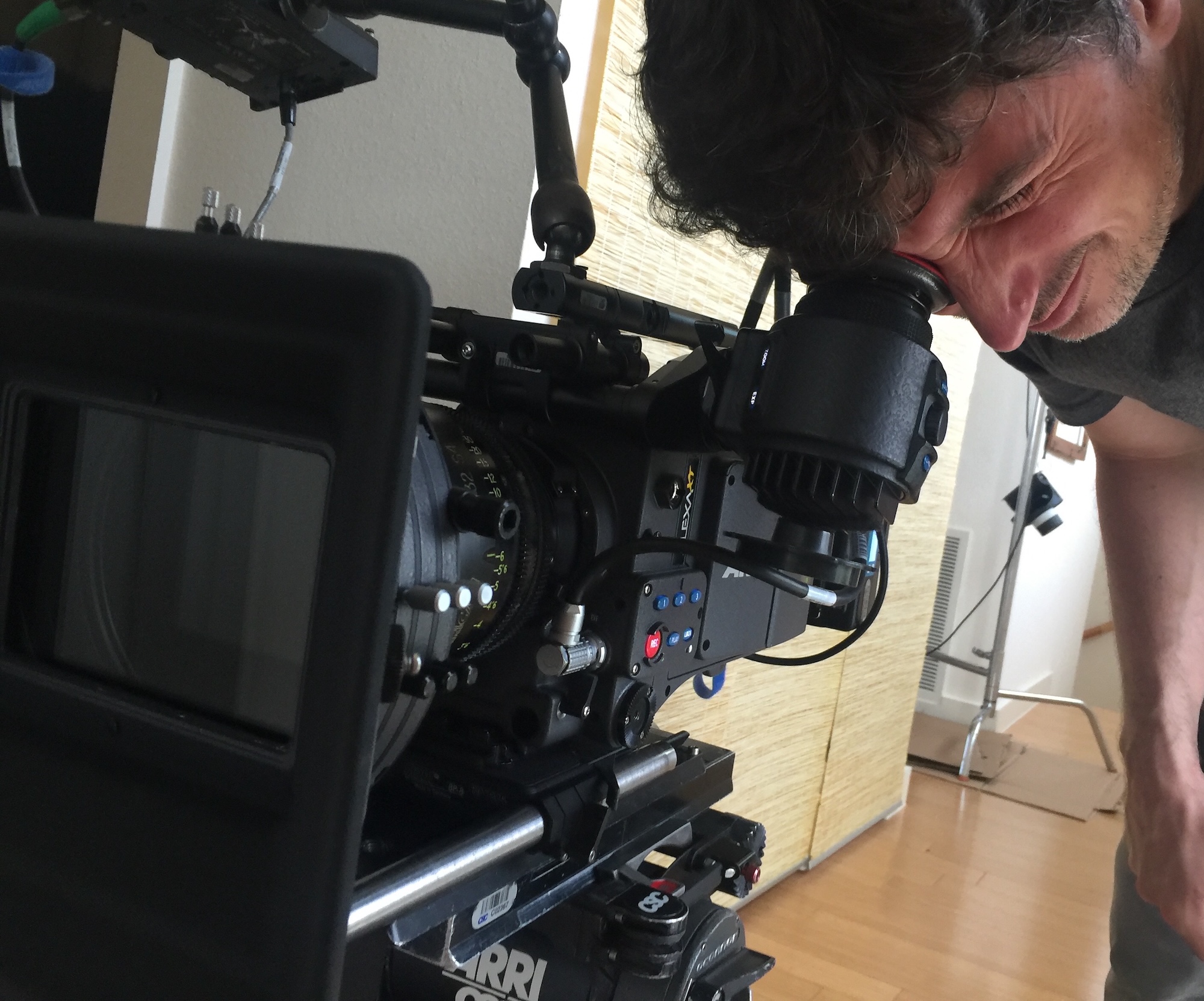
FILMTHREAT | Anthony Ray Bench:
"Another thing I enjoyed about this film was the look; as noted previously it is a black and white movie, but the shot design was really unique. There were shots and angles that gave it a very surreal quality. Certain scenes featured static shots that were disturbed by sudden and erratic movement. None of these things felt distracting or out of place, the film really plays off of the sum of its parts; the shots compliment the script…"
VARIETY | Dennis Harvey:
"Its near-future setting nicely suggested by canny Austin location choices and Matthias Grunsky's black-and-white photography."
FILMCOMMENT | Amy Taubin:
"Matthias Grunsky’s 16mm lensing is eye-popping from beginning to end.”
VARIETY | Alissa Simon:
"...On his third outing with Bujalski, d.p. Matthias Grunsky's intimate, unshowy lensing keeps the focus on the characters, with Jeannie's wheelchair taking on a presence of its own....."
NEW YORK MAGAZINE:
"The mumblecore icon’s latest, an ambling, understated story revolving around twin sisters in Austin, Texas, is visually expansive and heartrendingly acted."
BOSTON HERALD | Stephen Schaefer:
"It’s not much to hang a movie on, but the people are pleasant if not particularly memorable and Matthias Grunsky’s 16 mm cinematography crisply captures the reality of lives that are far from hip, but so very typical."
THE LUMIÉRE READER | Tim Wong:
“Also eschewing the indie movement’s preference for digital is his loyalty to film stock—the warm, inviting tones of Matthias Grunsky’s 16mm photography another reason why Bujalski’s moviemaking continues to engage and is a cut above the rest.
SLANT MAGAZINE | Andrew Schenker:
"...Swapping the grainy black-and-white of his previous feature, Mutual Appreciation, for a softer, pastel-inflected color palette (DP Matthias Grunsky does great things with greens) and tightening up some of the Faces-derived ramblings of the earlier picture, Beeswax charts a few days in the life of a handful of Austin thirtysomethings..."
THEAUTEURS.COM | Daniel Kasman:
"This is within the atmosphere of relaxation, because despite the mannerism of Bujalski's script, the story moves at life's rather dull and sidelong pace, which makes for a particularly odd atmosphere of a film that is evocatively casual in all things as it moves from person to person and place to place, but exudes a subtle energy of irritation throughout every minute of it. Yet this irritation, somewhat paradoxically, is evoked through a particularly lovely example of filmmaking, Matthias Grunsky's photography a terrific example of someone who chooses to shoot in color for aesthetic reasons and not by default, and Bujalski's sense of editing and staging in Beeswax being some of the sharpest I've seen in some time."
THEAUTEURS.COM | Ignatiy Vishnevetsky:
“Andrew Bujalski's one of the most distinctive directors of drama to emerge in the last decade. The elements that define his work are instantly recognizable: the abrupt starts and stops (those words seem more appropriate in regard to his movies than "beginnings" and "endings") and his instistence on not offering resolutions at the end of his films; the careful interplay of details that mark both his characterization and his framing; and the nuanced, often beautiful images he creates with his regular cinematographer, Matthias Grunsky. Frankly, he's got more in common with Mike Leigh and recent Patrice Chereau than with his friend Joe Swanberg.”
CINE-FILE | Ignatiy Vishnevetsky:
“Joe Swanberg...is a filmmaker first; what he does has very little to do with direction (which is credited to him and co-star Greta Gerwig) or dramaturgy (that can be credited to cinematographer Matthias Grunsky, "the steadiest shoulder in filmmaking," Andrew Bujalski's regular cameraman and an improvisational virtuoso who can get two people into a frame like no else; he shapes the action here into drama)...”
MUTUAL APPRECIATION
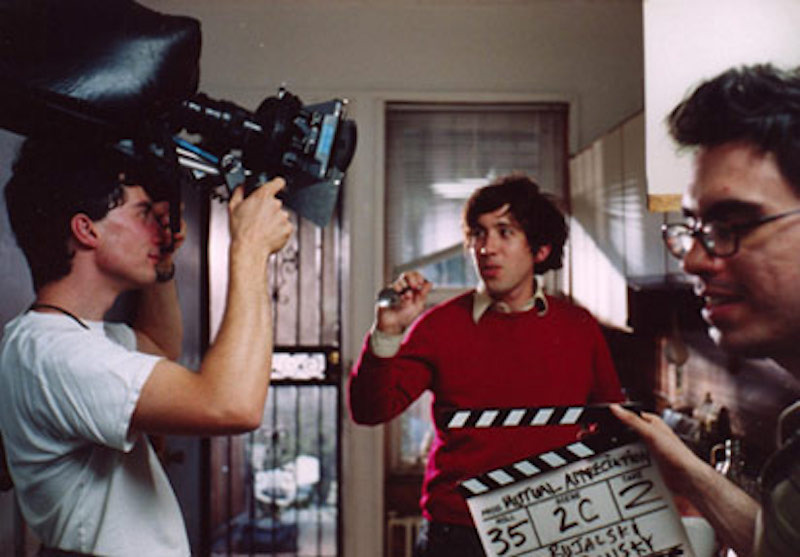
100 AMERICAN INDEPENDENT FILMS, 2nd edition | a British Film Institute book by Jason Wood:
"Despite its micro-budget origins, the film also looks a treat, benefiting from excellent use of New York locations, Bujalski's understanding of the struggling artist milieu and Matthias Grunsky's luminous black-and-white 16mm photography."
SAN FRANCISCO BAY GUARDIAN - Max Goldberg:
"How then do we account for this guided freewheel? Cinematography is, as always, at least part of the answer. The grainy 16mm black-and-white film stock isn't mere affectation but rather a functional stylistic element, underscoring the drab reality of the movie's unsettled spaces: apartments with everything secondhand and mismatched, unmade beds on nicked hardwood floors, and rooms that are either too big (making one fret over the lack of proper furniture) or too small (making one crouch). Bujalski and cinematographer Matthias Grunsky court these challenging spaces, always coming up with a revealing composition that frames characters in depth — splayed against walls or hunched in makeshift chairs."
SAN FRANCISCO CHRONICLE - G. Allen Johnson:
"Mutual Appreciation is even better. Bujalski's writing is so good, and every shot and edit seems exactly right. Hopefully, there will always be a place for a film like this on a theater screen, no matter the whims of the marketplace."
VARIETY | Joe Leydon:
"If John Cassavetes had directed a script by Eric Rohmer, the result might have looked and sounded like Mutual Appreciation. Indie auteur Andrew Bujalski (Funny Ha Ha) has studied his mentors closely- Mike Leigh and Jim Jarmush are among his other obvious influences- and put whatever lessons he learned to good use in this unaffectedly naturalistic and appealingly quirky low- key comedy about twentysomethings in the process of inventing themselves."
E FILMCRITIC | Jay Seaver:
"It's an interesting style, especially combined with Matthias Grunsky's black-and-white cinematography. The effect reminds me of the French New Wave, in terms of interesting angles and scenes framed for conversation leaving things unsaid."
TWITCHFILM | Peter Martin:
"Despite my personal reservations about the storylines, though, I cannot deny the casual artistry on display, an appealing amalgam of sound, dialogue -- once again convincingly enacted with non-professionals -- and the intentionally bleary, handheld, semi-doc look of cinematographer Matthias Grunsky, capturing some of the most endearingly daring black and white imagery in recent years."
FUNNY HA HA
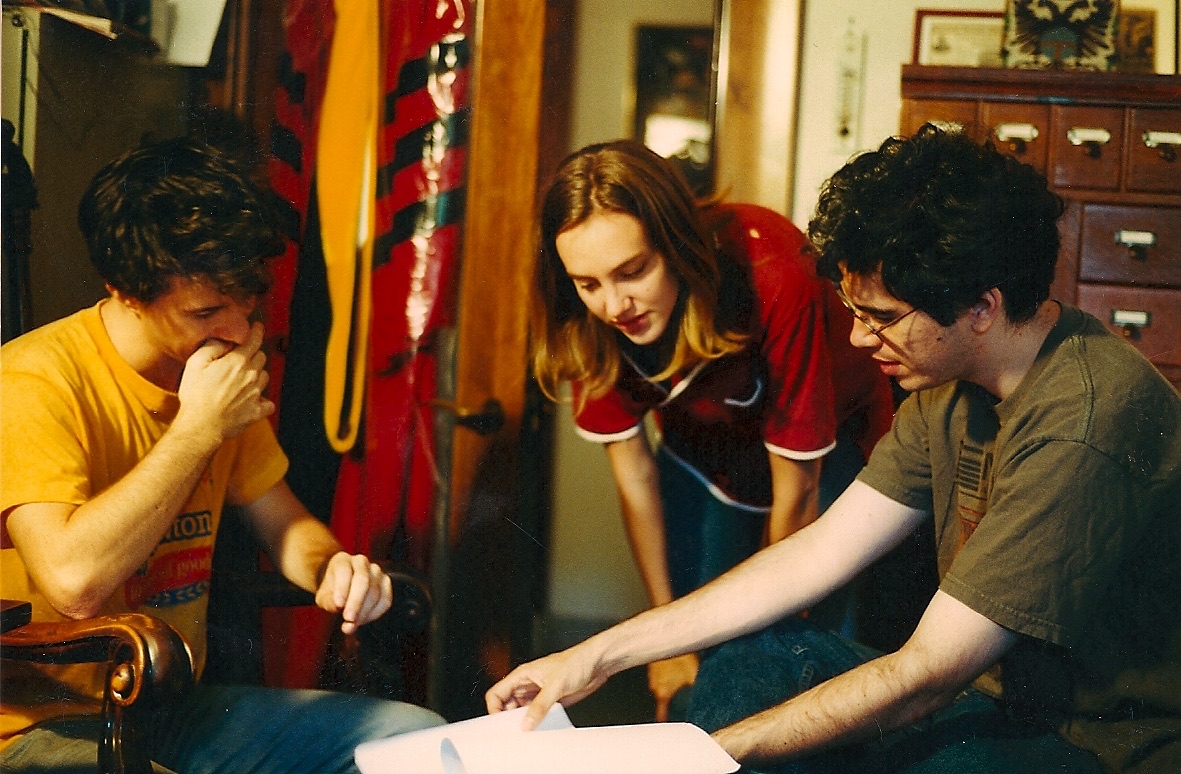
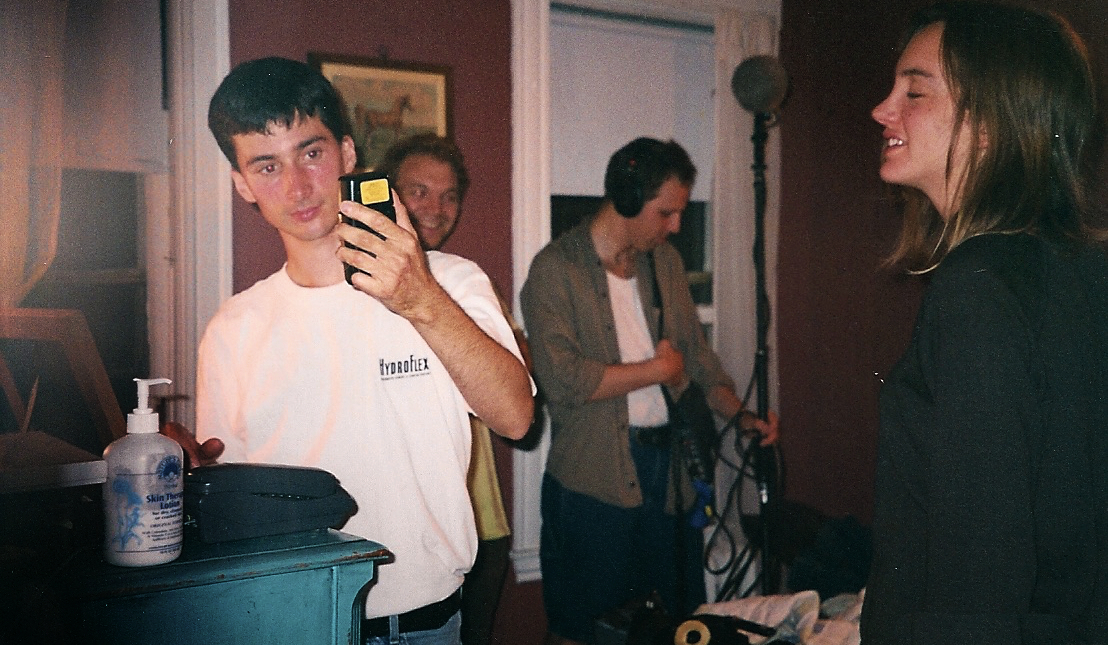
FILM INDEPENDENT | David Bax:
"But there’s no denying Bujalski’s clear eye for composition and, with the help of cinematographer Matthias Grunsky, his technical adroitness at lighting his actors."
INDIEWIRE | Matthew Ross:
"Funny Ha Ha is not just a beautifully made film, it's also a brave one. Writer/ director Andrew Bujalski and his cast and crew have succeeded in creating what most established independent filmmakers in this country claim to do all the time but hardly ever pull off-- they've made a film that dares to show life as it is really lived. At once tender and unsentimental, Funny Ha Ha deserves comparison to Mike Leigh's spectacular work for British television in the 70's and 80's."
REELINGREVIEWS:
"Funny Ha Ha looks and sounds like the low budget film it is, but Matthias Grunsky´s in-the-action photography is just right for making the audience feel like a fly on the wall"
THE BOSTON GLOBE | Wesley Morris:
"Obvious: The film lacks polish. Inexplicable: That´s part of its charm. Bujalski has a bracingly unadorned style, and Matthias Grunsky´s handheld photography is actually quite lovely."
FILMLINK | Amy Taubin:
"To describe the camera style as fly-on-the-wall suggests something colder and more clinical than what Bujalski and his cinematographer, Matthias Grunsky, are up to. It´s more like a big-old-family-dog non-judgemental, occasionally excited point of view."
